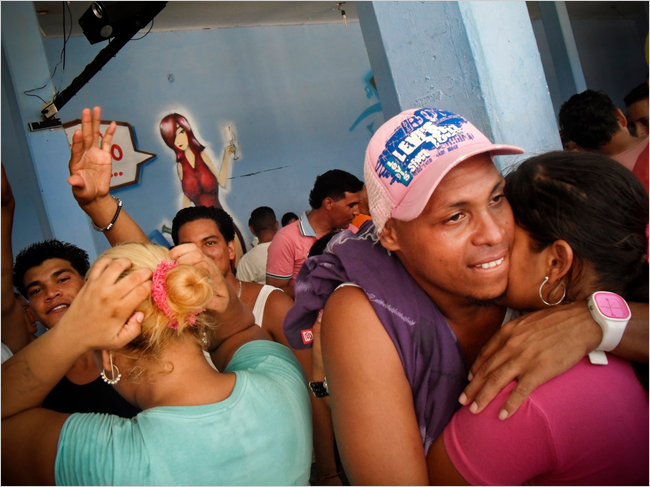Corrupt officials and a climate of lawlessness have turned several Latin American prisons into the site of wild parties, some with stiff penalties for inmates who don’t participate — or who don’t pay the entrance fee. InSight Crime counts down its top five.
5. Vallenato Party: La Picota Prison in Bogota, Colombia

The recent release of videos showing prisoners from the maximum security ward at La Picota prison enjoying a party with live music and whiskey led to a public outcry, partly because the party’s alleged organizer was Emilio Tapia, a former public official who has been accused of embezzling millions from Bogota’s public coffers. In the videos, Tapia and a former paramilitary fighter are seen chatting on their BlackBerry phones and posing for pictures alongside accordion-wielding musicians playing vallenato music, a genre typical of Colombia’s Caribbean coast. According to Semana magazine, Tapia and his friends frequently hold these events and organize soccer games, placing bets on the winning team of between $1,000 and $3,000.
After the videos were released, El Tiempo published a photo of an incarcerated paramilitary commander posing in front of 10 bottles of whiskey at La Picota.
4. Bullfighting Parties: San Jose El Alto Prison in Queretaro, Mexico
Under one former director, who ran the penitentiary center from 2003 to 2009, the San Jose El Alto prison was allegedly the site of many parties and social events including weddings and baptisms. According to former prisoners, inmates mixed freely with prison staff and public officials in social gatherings organized by the prison director. In addition to drugs, alcohol, and prostitutes, the San Jose El Alto parties allegedly included activities like bullfights and rodeos. According to one former prisoner, inmates who refused to participate in the festivities were punished with solitary confinement.
3. Our Lady of Mercy Party: Maracaibo National Prison in Venezuela

To celebrate the Catholic holiday of Our Lady of Mercy, the patron saint of prisoners, inmates at the Maracaibo National Prison allegedly hosted a three-day party in 2012 complete with performances by several live music groups, special effects including a smoke machine and fireworks, strippers, and meat from five cows and 15 pigs. The food was allegedly accompanied by 40 cases of whiskey and 200 cases of beer, as well as drugs. Inmates also competed to see who could bring the “best” prostitutes to the event.
On the last day of the party, the participants allegedly murdered an inmate who tried to join the festivities without paying the entrance fee.
2. “The Yacht Club”: San Antonio Prison in Isla Margarita, Venezuela
 In an unconventional initiative to reduce prison violence, Venezuela opened a nightclub for inmates at the San Antonio prison in 2013. The inauguration party for “The Yacht Club” allegedly included strippers and DJs, while inmates used smartphones to invite friends and family via social media.
In an unconventional initiative to reduce prison violence, Venezuela opened a nightclub for inmates at the San Antonio prison in 2013. The inauguration party for “The Yacht Club” allegedly included strippers and DJs, while inmates used smartphones to invite friends and family via social media.
In a 2011 expose on the San Antonio prison, The New York Times described the penitentiary facility as “a Hugh Hefner-inspired fleshpot” complete with four different swimming pools and female visitors frolicking in bikinis. According to the newspaper, inmates smoked marijuana and crack cocaine in an alley between cells, and enjoyed poolside barbecues and drinks.
Prisoners allegedly financed their hedonistic lifestyle through cockfighting competitions — which island residents came to the prison to watch — and drug sales. All of this reportedly happened under the leadership of convicted drug trafficker Teofilo Rodriguez, alias “El Conejo,” who boasted an impressive arsenal of firearms that he kept in the prison.
1. Pablo Escobar’s “Golden Cell”: La Catedral in Envigado, Colombia

When Pablo Escobar turned himself in to the Colombian government in 1991 with eight of his henchmen, he was confined to a luxurious “prison” with game rooms, a gym, a waterfall, and a soccer field (see embedded video). Escobar allegedly continued to run his drug trafficking operations from behind bars, ordering assassinations that were sometimes carried out within the prison. He also hosted wild parties with alcohol, drugs and prostitutes that allegedly turned into orgies. According to legend, on one occasion the former drug lord even played soccer in La Catedral using the skull of a victim in place of a soccer ball.
Once the excesses of Escobar’s prison were revealed in the media, La Catedral was dubbed “the golden cell” and “the maximum comfort prison.” Upon learning that he was going to be transferred to another facility, Escobar escaped from La Catedral and remained on the run until his death in 1993.


